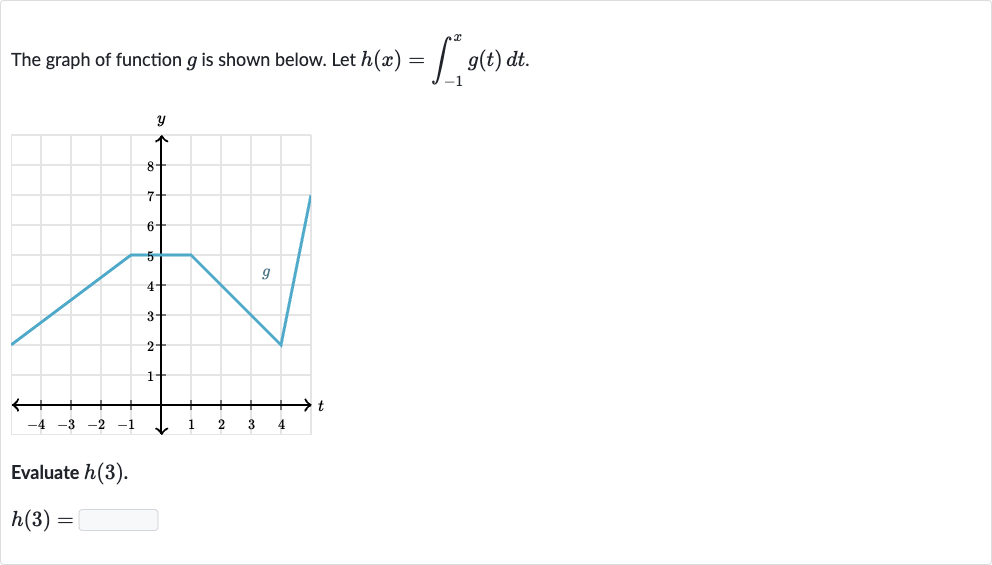Full solution
Q. The graph of function is shown below. Let .Evaluate .
- Assumption of Provided Graph: Since we don't have the actual graph of , we'll assume it's been provided and that we can determine the area under the curve from to . Let's say the area from to is . So, will be equal to .
- Calculation of Area: Now, we calculate the area . If the graph is made up of simple geometric shapes, we can calculate the area of each shape and sum them up. Let's say the total area we found is square units.
- Calculation of : So, is equal to the total area under the graph of from to , which we've calculated as .
More problems from Evaluate exponential functions
QuestionGet tutor help
QuestionGet tutor help
QuestionGet tutor help
QuestionGet tutor help
QuestionGet tutor help
QuestionGet tutor help
QuestionGet tutor help
QuestionGet tutor help
QuestionGet tutor help

